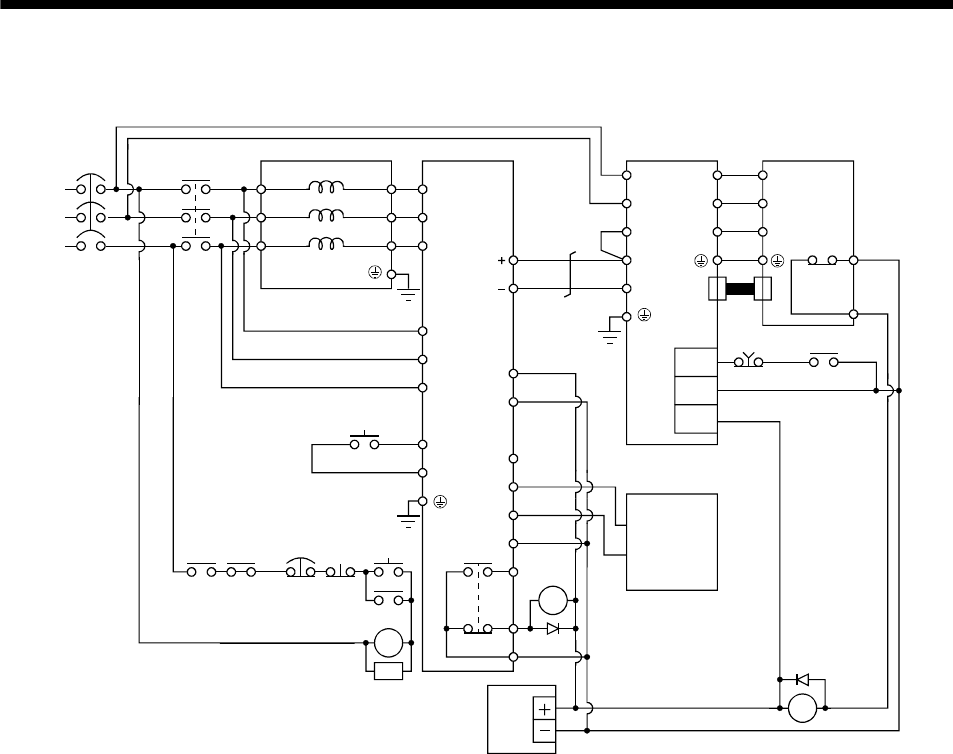
11 - 50
11. OPTIONS AND AUXILIARY EQUIPMENT
(3) Connection diagram
(a) 200V class
P
1
DOCOM
RA1
EM1
C
B
R/L
11
3-phase
200 to
230VAC
S/L
21
T/L
31
R2/L
1
S2/L
22
R2/L
12
T2/L
32
S2/L
2
(Note 3)
P24
SD
RDYB
RDYA
RSO
SE
A
T2/L
3
R/L
11
S/L
21
T/MC1
RES
SD
(Note 1)
L
11
L
21
P
N
U
V
W
(Note 1)
EM1
(Note 2)
RA1
RA2
24VDC
power
supply
Thermal
relay
OHS2
OHS1
CN2
MC
NF
FR-CVL FR-CV
MC
RA1 RA2
EM1
OFF
ON
RESET
SK
MC
(Note 1)
Servo motorServo amplifier
(Note 4)
Servo system
controller
(Note 5)
(Note 1)
(Note 7)
DICOM
N/L
P/L
U
V
W
(Note 6)
Note 1. Configure a sequence that will shut off main circuit power at an emergency stop or at FR-CV or servo amplifier alarm
occurrence.
2. For the servo motor with thermal relay, configure a sequence that will shut off main circuit power when the thermal relay
operates.
3. For the servo amplifier, configure a sequence that will switch the servo on after the FR-CV is ready.
4. For the FR-CV, the RSO signal turns off when it is put in a ready-to-operate status where the reset signal is input.
Configure a sequence that will make the servo inoperative when the RSO signal is on.
5. Configure a sequence that will make a stop with the emergency stop input of the servo system controller if an alarm occurs in
the FR-CV. When the servo system controller does not have an emergency stop input, use the forced stop input of the servo
amplifier to make a stop as shown in the diagram.
6. When using the servo amplifier of 7kW or less, make sure to disconnect the wiring of built-in regenerative resistor (3.5kW or
less: P and D, 5k/7kW: P and C).
7. When using the servo amplifier of 11k to 22kW, make sure to connect P
1 and P. (Factory-wired.)


















